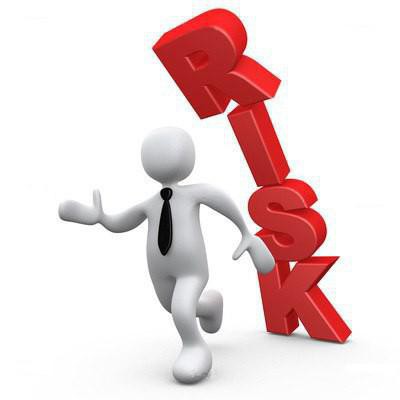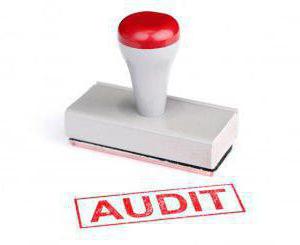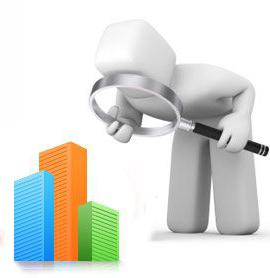Any entrepreneurial activity has certain risks. They differ in source, circumstances of occurrence and term, as well as in methods of assessment and analysis. There is a certain classification of risks, which should be considered with various examples.
general description
To classify risks, they need to be systematized on the basis of some general parameters. With this mechanism, the analysis process becomes much simpler. For grouping, you can highlight certain reasons:
- appearance period;
- features of accounting;
- circumstances of occurrence;
- area of formation;
- features of the consequences.
If the risk classification system is based on the period of occurrence, then they can be divided into retrospective, current, and prospective. Under the condition of research of the first group and their features, it is possible to project the received information on perspective and current ones.
The classification of risks in accordance with the circumstances of occurrence suggests the following varieties:
- Political, the tone of which is set by a political situation that has a direct impact on business. Among these points can be identified border closure, customs bans and others.
- Commercial or economic risks are those that are not dependent on the suboptimal economic situation within the state or organization. Enterprises most often face an imbalance in market conditions, difficulties in fulfilling payment obligations in a timely manner, with variable management conditions.
Accounting Features
The classification of economic risks, depending on the characteristics of accounting, allows you to make such combinations:
- External risks are not in direct interaction with the functioning of the organization or the audience that is its contact. We are talking about individuals and legal entities, various social groups that enter into interaction with the company in one way or another. In this case, it is necessary to take into account a rather large number of diverse circumstances - political, economic, social, as well as others.
- The classification of risks into internal is associated with certain features of the company, as well as its contact audience, due to which they appear. The degree of their manifestation is directly affected by the business activity of the company’s senior management, the vector of development of activity in the marketing sphere, as well as the production potential, technical equipment and other issues.
Depending on the consequences
The classification of risks depending on the consequences will take the following form:
- Pure and simple risks cause damage to a business with a maximum degree of probability, and arise as a result of military operations, cataclysms, disasters and similar factors.
- Dynamic and speculative risks - characterized by the threat of loss of profit, but they can bring income in comparison with the expected results. They appear in connection with the instability of the market, exchange rate fluctuations, innovations in tax legislation, as well as others.

Formation Area
When the classification of risks is based on such a parameter as the area of formation, then we will get the most extensive group among all. Each of the following should be considered:
- Production risks are associated with the fact that the organization is unable to implement plans and violates agreements on the volume of planned production of goods, goods or services due to the suboptimal external environment, as well as the improper use of technology, working capital and fixed assets, working time and raw materials. The reasons for the appearance of such risks are most often the costs of increased taxes, increased production costs, a disordered system of work with suppliers, certain malfunctions in the hardware and others.In this case, the classification of business risks depends on these parameters.
- Commercial associated with the sale of services and goods that the organization itself produces or purchases. Such risks are possible due to the fact that sales are reduced as a result of unstable conditions, loss of goods during use, growth in value during the purchase, and others. In this case, the classification of entrepreneurial risks depends on the factors that caused them in the first place.
- Financial risks indicate the possibility of difficulties with the implementation by the company of its financial obligations, which is often associated with a fall in the prices of investment and financial portfolios due to the instability of exchange rates, as well as interruptions in payment transactions.
- Insurance risks arise as a result of circumstances that are assumed at the conclusion of the insurance contract, the result of which are the obligations of the insurer to pay compensation of the agreed size. The nature and classification of risks in this case is quite understandable, therefore, the consequences should be decided. In this case, they mean damage associated with poor-quality insurance work that precedes the conclusion of the contract. These risks arise due to the incorrectness of insurance rates and the wrong approach of the insurer to the process.

Production activities
The concept and classification of risks depending on production activities may be as follows:
- organizational risks, formed due to the presence of certain miscalculations in the organization’s management system and employees, as well as due to the lack of a clearly structured control system, that is, they are associated with violations in the internal business processes of a single enterprise;
- market risks are possible as a result of the instability of the economic situation: loss of liquidity, falling demand for products, certain monetary losses associated with surges in the value of goods;
- credit risks may be associated with the fact that the partner of the organization is unable to comply with the conditions specified in the loan agreement. Even the classification of banking risks may include such moments, since they are related to receivables or the securities market;
- legal ones are typical for situations when during the transaction they did not take into account the legislative framework, or as a result of amendments to the legislation (here one can also note such a moment as the risk of discrepancies in legislation in different countries, as well as incorrect documentation);
- risk classification also implies the presence of a technical or environmental category, which is characterized by the likelihood of damage to the environment, accidents and fires, or some kind of malfunction due to a violation in the process of installation and design work.
By the consequences
Depending on the consequences, quite certain types of risks can be distinguished. Acceptable risk is associated with the adoption of a decision, in the event of unrealization of which the company may face financial losses. Within the specified area, business losses may occur that do not overlap the planned income level. In case of critical risk, we are talking about losses that can significantly exceed profits. In such a situation, the company may face a loss of funds invested in the project earlier. Definition of a catastrophic risk suggests that the organization is on the verge of bankruptcy, and losses are sometimes equal to the property status of the entire company. Such a risk can be associated with any situation that poses a danger to a person.

Risk Assessment Methods
The classification above provides the basis for a competent analysis and risk assessment. However, to begin with, you should decide on this concept.Risk assessment methods are a set of systematic activities aimed at tracking risk factors and varieties, as well as quantifying them. The principle of risk assessment assumes that there is a close relationship between quantitative and qualitative indicators.
Auxiliary tools
Now that the definition of risks is given, you can consider the basic information that is applicable for their analysis and assessment. To do this, you can use:
- structure and staffing of the company;
- accounting statements;
- contracts
- map of technological flows;
- production costs;
- company plans of a financial and production nature.
Through a qualitative risk analysis, the appraiser can determine the factors that stimulated the appearance of risk, as well as identify which stages of production are associated with its occurrence. The appraiser manages to establish possible risk areas, disclose the risks that accompany the activities of the enterprise, and also carry out work to identify the likely gains and losses of risks. At this stage, the appraiser must determine the central types that have a direct impact on the activities of the enterprise, that is, attribute the risk to one or another type in accordance with the classification division for which the characteristic is presented. Economic risks or other types are identified precisely at this stage. This method of assessment and analysis is applicable in order to help in quickly tracking the degree of risk by the qualitative and quantitative composition of risks, and then choose a specific strategy for further actions.

Word about quantity
The degree of risk resulting from a qualitative analysis provides the basic components for a quantitative analysis. It turns out that only those risks that appear in the corresponding operation of decision-making algorithms are evaluated. The evaluator will receive a numerical indicator of the magnitude of each of the risks, as well as the indicator as a whole, which will determine the total damage and give a valuation when there is already a fact of the damage done. Then he will be offered a set of actions aimed at neutralizing risks with the obligatory indication of financial calculations. When using the quantitative method of determining such an indicator as the degree of risk, the evaluator gets the opportunity to formalize it and appeal to certain tools. The most frequent methods in work are statistical, analogue method, expert estimation method and analytical methods.
Statistical Methods
With their help, you can identify the potential for losses. Moreover, the basis for the assessment is the statistical information of the past period, which helps to determine the area of probable damage. With its help, you can systematize situations and parameters within a specific approach. To use them, probabilistic characteristics are required.
The probability estimation method allows you to get a schematic assessment of the possibility of using a particular solution by calculating the proportion of completed and unfulfilled decisions in the totality of decisions made.
Decision trees are used as a tool for assessing the risk of situations in which the number of development opportunities is monitored. They are used in those cases when decisions made at a particular moment in time are based on those decisions that were made earlier. In this case, a specific scheme is defined for situations in the future.
The method of analyzing the probability distributions of payment flows suggests the possibility of changing the cost of payment flows.
Simulation is an actual method for situations where it is not possible to conduct real experiments or difficulties arise with the collection of statistical information.Actual data is replaced by values generated by the computer.
Analytical methods
The classification of financial risks, like everyone else, can be investigated using analytical methods. With their help, you can predict the likely damage through mathematical models. Most often they are used to evaluate investment projects.
The sensitivity analysis allows you to study the relationship of the final indicator and variations in the values of indicators that are included in its definition. This method is intended to demonstrate how the final indicator changes in the event of a change in the initial parameters.
The method of reliable equivalents is intended to adjust the values of cash flows by multiplying by decreasing coefficients, for each of which there is a certain characteristic. At the same time, economic risks become more understandable to an uninitiated person.
Adjustment method discount rates taking into account risk, it is the most frequent method, therefore it is recognized as the basic one. It has such a feature as a change in the basic rate of discount, estimated as minimally risky. The regulatory process involves adding the amount of the required risk premium.

Expert Assessment Method
The definition of risk in this way is a combination of logical and mathematical-statistical methods for analyzing responses from a certain number of specialists. With its help, you can apply the professional knowledge of experts and their flair at the same level. This method is applicable in the absence of other sources of information. The problem with its use is associated with difficulties in choosing specialists for the survey.
Analog Method
This option is applicable only when all are not suitable. The evaluator in his work analyzes the database of objects of a similar type, which allows him to track the characteristic relationships and project them directly onto the object being evaluated.
Risk Examples
The bank gives the go-ahead for one of the credit lines in the agricultural sector in the amount of more than $ 10 million. The client is a large agricultural holding company with a good reputation, not allowing delinquencies. Because credit line similar to the previous ones, it was approved without problems very quickly, because the insurance company gave the green light to it. But the summer turned out to be hot, the grain dried up, there are no products for sale, therefore there is nothing to pay on the loan. Negotiations took place in the context of considering various options for overcoming the situation - from debt restructuring to obtaining insurance for this customer. If you had to go to an insurance company, then this would cause a higher percentage of payment for insurance in the future. The result of this was the choice of the best option - repayment of debt with liquid grain, which was implemented through firms-traders. In this case, the interest rate on risk insurance has not changed, even taking into account the need for negotiations with traders.
Bank guarantee
If the bank agrees to bank guarantee then the debtors take on certain obligations - depositing a certain amount on the bank account and commission, which is significant for a number of enterprises. In this case, it is required to take into account the features of customers in order to be as flexible as possible in determining the minimum amount of a bank guarantee and the distribution of expenses by commission. As a result of the analysis of the financial statements of customers, representatives of banks compiled a classification of risk factors, as a result of which debtors were divided into 4 categories:
- Enterprises with minimal risk that do not need a guarantee from the bank to agree on the amount of credit acceptable for them.
- Companies with an acceptable level of risk. For them, a bank guarantee of 50% of the allowable loan was required.
- Firms with significant risks. A bank guarantee for them involved covering the entire amount of the credit limit.
- Small turnover of young enterprises that work in the framework of prepayment.
With the help of such a classification, it became possible to completely reduce the volume of a bank guarantee to the dependence on which credit policy was chosen by the company, as well as what kind of money turnover it is about.
findings
Even with all of the above, another classification of financial risks can be used, which will be more effective in the current conditions.

